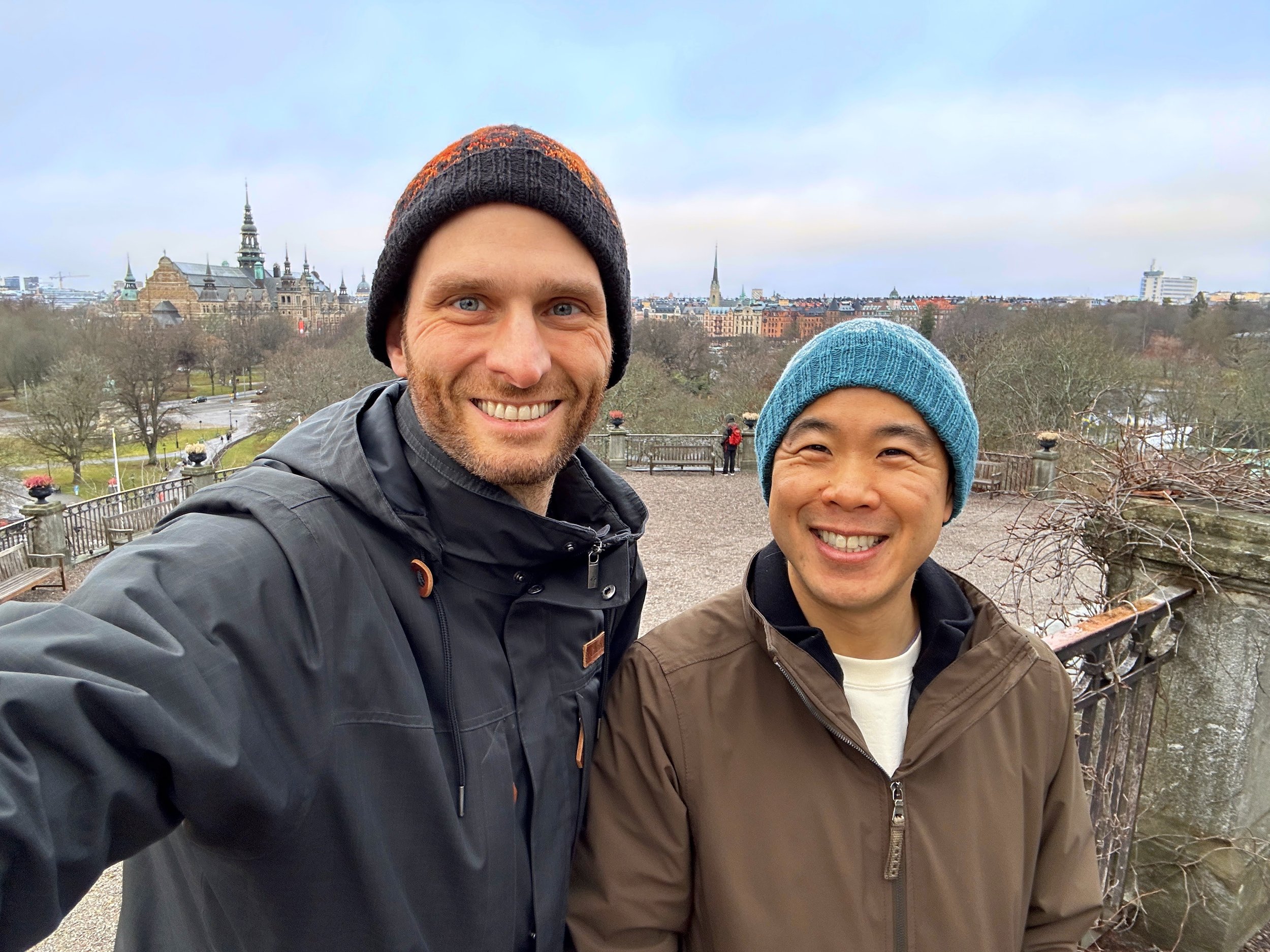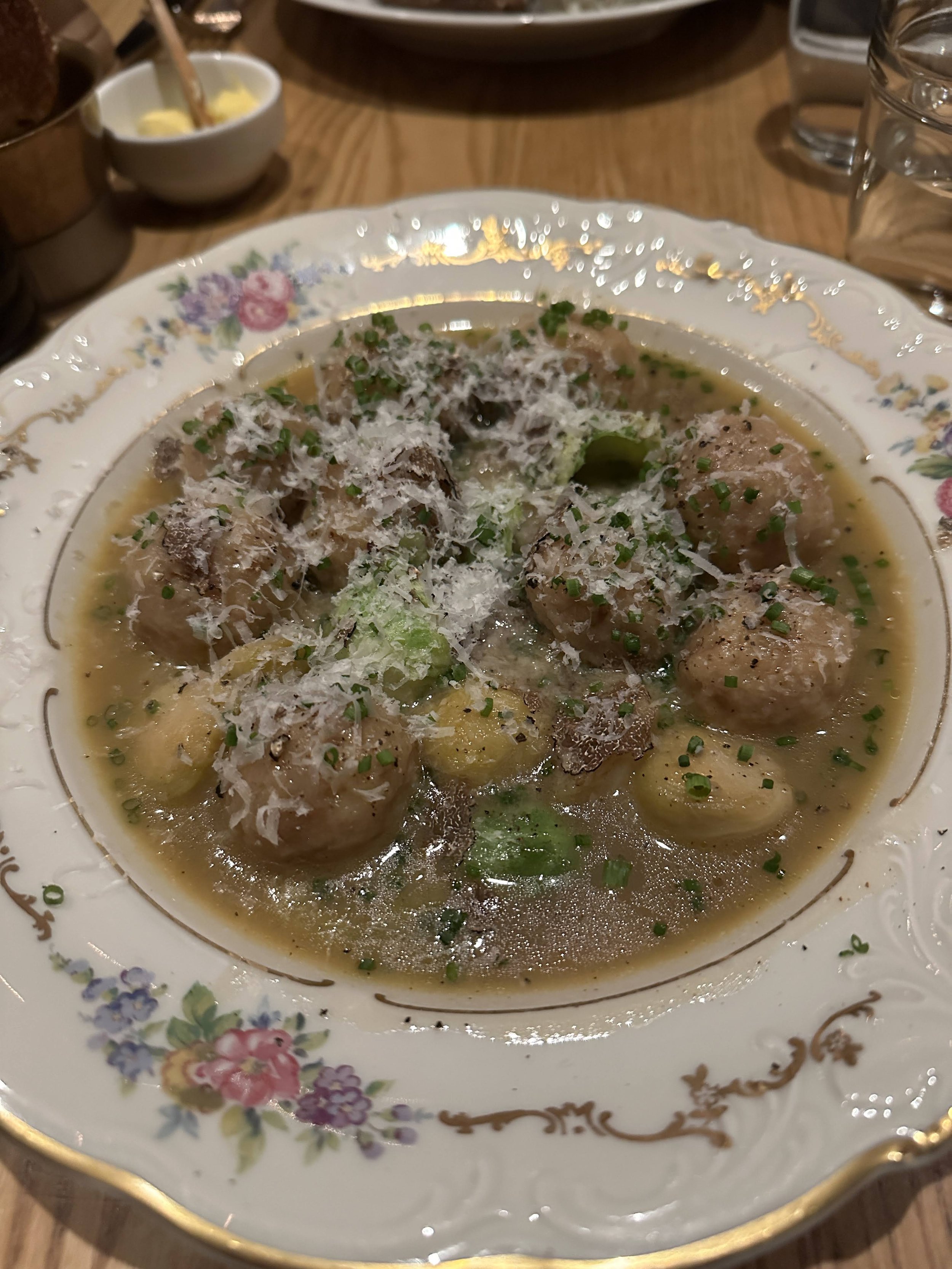Stockholm 1: Shipwreck, Reenactors, and Dancing Queens
We crashed hard after the rough journey, but still managed to wake up in time for the hotel breakfast buffet on Saturday morning. The spread included hot food, pastries, a yogurt and fruit bar, and even a vegan and gluten free area. We expected to skip lunch anyway, so we ate well before going out.
Stockholm has extensive public transit, but we didn’t realize we were supposed to use a surface tram until after tapping into the metro station with a credit card, discovering our line (s7) did not exist, and walking back outside. Once we found the tram, we got on and didn’t find anywhere to tap in again. At least we’d already paid for a metro ride, so technically I don’t think we broke the law.
The tram dropped us in front of the beautiful Nordic museum, which we didn’t have time to explore, unfortunately. Instead, we circled behind it to the very unique (and brutalist) Vasa museum.
Inside, the space is dominated by the recovered wreck of a 17th century war ship that sank about 1 mile into its maiden voyage. A great disaster for the Swedish royal navy of the time, but great time capsule for future historians!
The galleries go up 5 floors to let you explore from various angles. They also have some reconstructed areas to give you an idea of what it would have been like on board, and painted. The woodworking, in particular, is just amazing.
Another weird detail is that the steel “cradle” that it sits in was built in the 60s, and the ship has deformed a bit since then as it dried out (and maybe crushed under its own weight a bit), so they shimmed the bottom of it a lot. There’s a plan to completely replace the cradle soon, apparently.
After that, we wandered down the harbor outside. There’s a ship museum that was closed, a spirits museum about Swedish alcohol culture (including an extensive bar!), a Viking museum, and even a little amusement park named after Tivoli (see our trip to Copenhagen for more on that!). However, we passed by these with a singular aim: the Skansen open-air museum (and zoo, as we found out).
Skansen is massive. It takes up the bulk of this island (though it’s weird enough to me that there’s an island full of fun things), and includes a zoo and an aquarium, in addition to the open air museum.
After going up the escalator, we found ourselves in the recreated 19th century town, with a functional pottery shop, bakery, glassblower, and many other buildings just for show. Some shops were actually making things that they offered for sale, like the glass art and bakery. Others were closed, or just sold modern items, like the iron monger, which sold modern gardening tools for some reason.
Wandering out of town, we found the (relocated) summer house of some rich guy from the 1700s, with a garden that is probably gorgeous in the spring and summer. There was also a nice lookout over the city from there.
Skansen, as it turns out, is huge. We wandered up the western and northern perimeter, unfortunately coming across a path closed due to storm damage, but were able to see a bunch of historic structures. The log cabin buildings as well as various farmsteads were all relocated here from locations across Sweden, though there are a few original structures (mostly 19th century) from when this area was used to mine iron ore.
Did we mention Skansen is also a zoo? We didn’t really intend to visit the zoo area, but it had a number of winter animals available to look at, like sea lions, bears, and moose, as well as farm animals. In fact, it was pig feeding time when we passed by, and those hogs are very food-motivated!
However, the most fun we had with animals was technically not with a zoo animal – there were local squirrels that were very comfortable around humans!
Throughout our exploration, we noticed many of the buildings had christmas dining table displays inside, representing an eclectic mix of eras (mostly 18th century through early 20th century) as well as diverse socioeconomic statuses. In each one, there was also a reenactor in period costume you could talk to about the overall history and the specifics for each house.
Finally, we passed through the remnants of the christmas market, which unfortunately closed, as we visited just after christmas, but still had mulled wine, hot chocolate, and hot lingonberry juice for sale. However, we decided to exit the park and go to a local cafe we’d passed by out on the street for our first “fika” – afternoon coffee and cake, a Swedish tradition. We opted for hot chocolate instead of coffee, in fact.
After that break, it was finally time to visit the Abba museum! Nick has been a fan of Abba since his teen years, and it’s hard not to have heard their most famous songs, whether from the Mamma mia movies, from Eurovision, or from ridiculous parodies on SNL:
Unfortunately, the museum was packed. According to the guy working the entrance, it’s the busiest he’d seen yet, though he’d only worked there one month. The result was that a lot of the interactive parts had long lines, and each room generally felt crowded. The one exception was the final room that showcases all the solo work each of the members had done in the years since the band broke up – clearly not something most fans are excited about.
There’s also a lot left unsaid; some of the interpersonal relationship drama that truly defined the band (seriously, half the lyrics were written by Benny and Björn about other women even while they were having their wives sing those words). But the museum is obviously designed with the permission of the band, so nope, none of that is really addressed.
Also, Jerry found the pink bathroom a total trip:
Finally, we took the tram back to where our hotel is, in the downtown shopping district. On our way back, we realized there was an Ikea store right next to our hotel, with some sort of Ikea museum popup, covering some of the iconic Swedish company’s history. But jetlag was hitting hard, so we didn’t linger and instead focused on resting before dinner.
Jerry had reserved a dinner at a modern Swedish restaurant called Rolfs Kök. The food was great, and the atmosphere was very lively, so I’d highly recommend it. Nick was not a huge fan of sweet pickled herring, even though it was a great presentation of it.
Anyway, after a chilly walk back to the hotel, it was time for bed, with our arctic adventure at the ice hotel slated for the next day!




























































